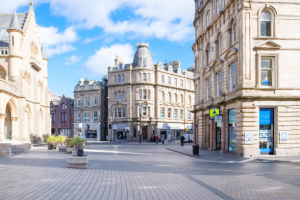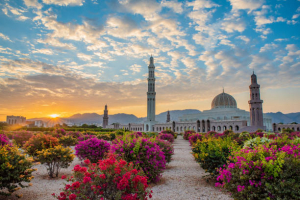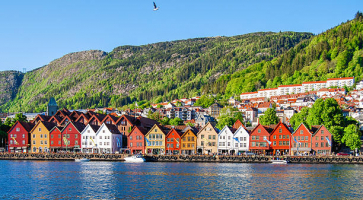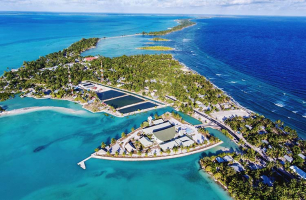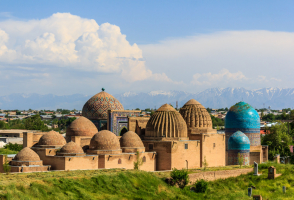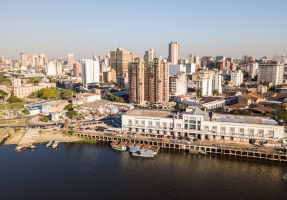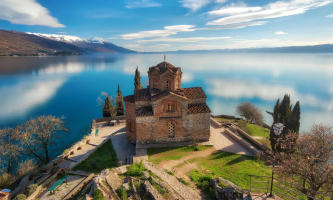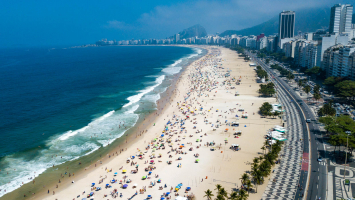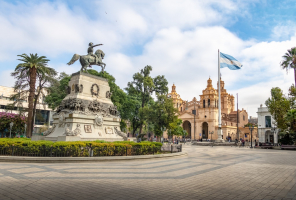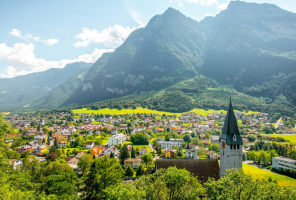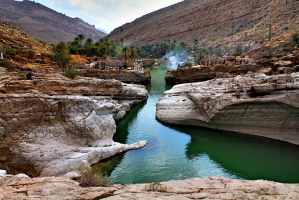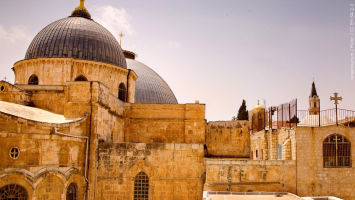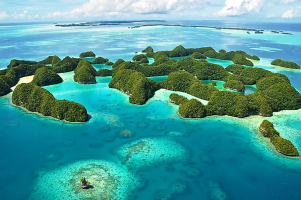Top 10 Reasons to Visit Kazakhstan
Kazakhstan, formally the Republic of Kazakhstan, is a transcontinental republic with a coastline along the Caspian Sea that is mostly in Central Asia and ... read more...partly in Eastern Europe. Its capital city is Astana, which will be called as Nur-Sultan from 2019 to 2022. Kazakhstan is the world's biggest landlocked country, the largest and northernmost Muslim-majority country in terms of geographical area, and the world's ninth-largest country. Kazakhstan is not only the world's largest Uranium exporter and one of the top three CIS countries in terms of precious metal reserves. But, for the time being, Kazakhstan remains a mysterious new land with amazing natural beauty and a distinct nomadic cultural heritage. Here are the top 10 best reasons why you should try to visit Kazakhstan once in your life!
-
Almaty, historically known as Alma-Ata, is Kazakhstan's biggest city. Almaty is Kazakhstan's largest economic, financial, and cultural center, as well as its most populated and cosmopolitan city. Despite the fact that the capital was relocated to Astana in 1997, Almaty remains Kazakhstan's pulsing cultural center. On Amalty territory, at an elevation of 600-900 meters above sea level, there are white foaming streams, clear lakes, and apple and cherry orchards stretching across the steppe.
Almaty is known as the "Heart of Asia" since it is supposed to be the original home of the apple. Almaty translates to "Apple" in Kazakh. Amalty is also thought to be the genetics of many apples, and it is frequently visited by scientific experts from around the world in order to understand more about this intricate genetic system. It is also known for having the world's largest wild apple forest. During the traditional annual apple festival held in September each year, visitors to Kazakhstan will be able to view the freshest apples in the world. Apples weighing up to 1 kg were produced because to the steep terrain and favorable temperature. Participate in the apple festival to learn more about Kazakh culture and enjoy the best apples.
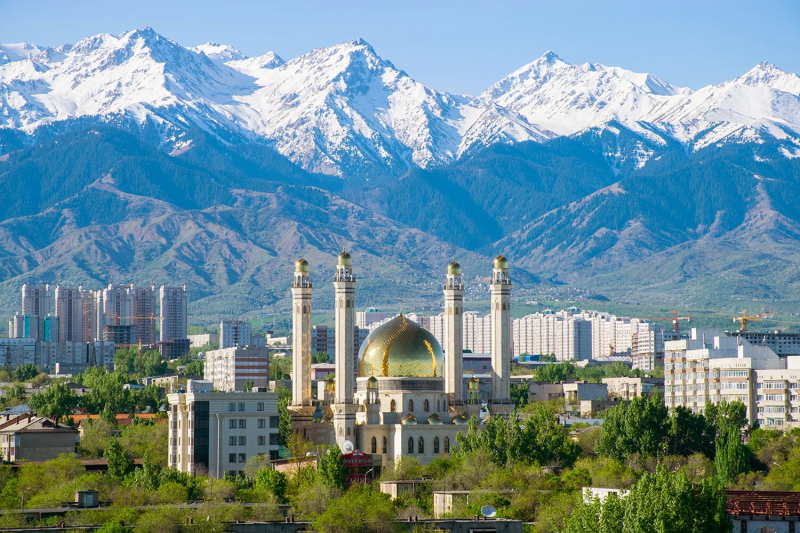
digitalnomads.world 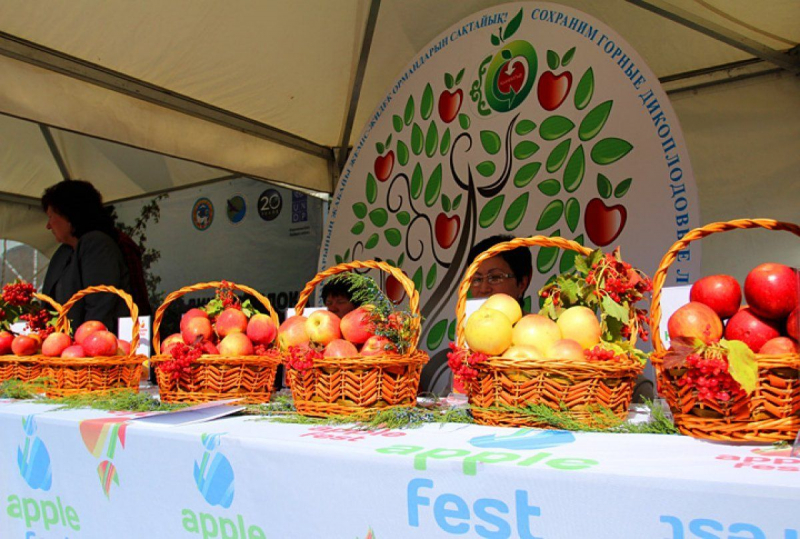
tengrinews.kz -
When it comes to the highest transparent tent in the world, the Khan Shatyr Entertainment Centre in Astana, Kazakhstan's capital will come to your mind. The architectural project, designed in a neo-futurist style, was launched on December 9, 2006, by Kazakhstan's first President, Nursultan Nazarbayev. The Khan-Shatyr, which opened in 2010, is a spire with a distinctive transparent curtain supported by strained steel lines. The curtain's particular chemical lining protects the marquee space from temperature drops and helps to preserve a unique microclimate. Because of these and other innovations, the Khan-Shatyr Entertainment Centre is among the top ten eco-buildings in the world. Norman Foster, the architect of several Astana architectural marvels, designed this one-of-a-kind edifice.
There are many retail and leisure facilities under the marquee dome, including brand stores and boutiques, offices, supermarkets, company offices, cafés, restaurants, playgrounds, family parks, film theaters, and Aqua Park. The aqua park artificial beach is a one-of-a-kind system that maintains a tropical climate with a temperature of 35°C and sand imported from the Maldives. Furthermore, one can drive a real big dipper along the entire length of the marquee, covering the majority of the Khan Shatyr.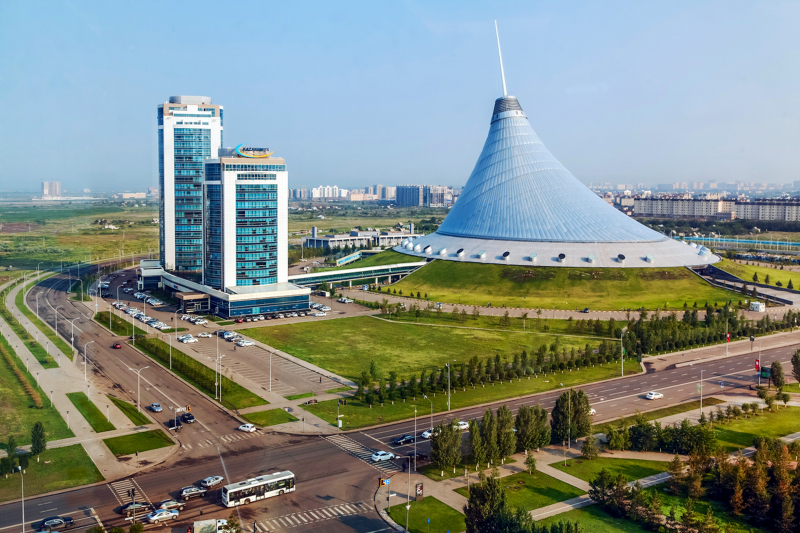
itinari.com 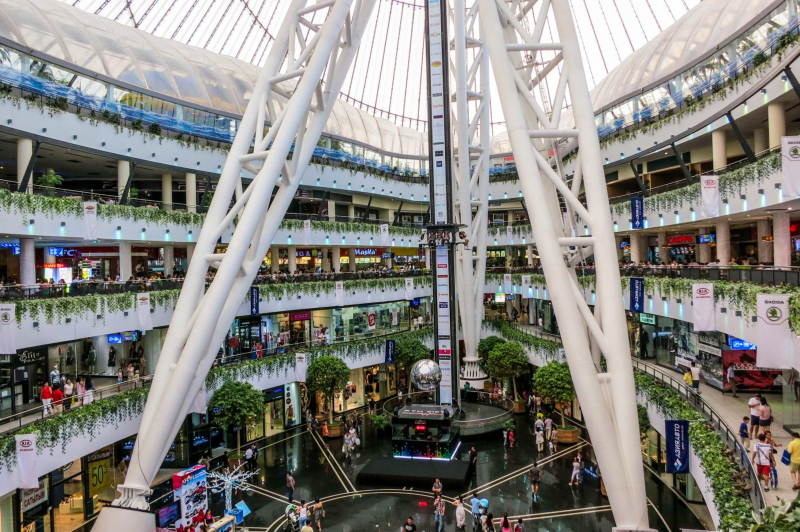
trvlland.com -
When you have a chance to visit Kazakhstan, you must try to visit Big Almaty Lake is without a doubt one of Kazakhstan's most stunning lakes. This is a naturally occurring alpine reservoir. Big Almaty Lake It's worth the journey, and it appears in the photos. You will undoubtedly appreciate the environment up here.
The lake is sometimes free to visit; other times, access is limited and admission prices are hiked. When you visited this lake in both the summer and winter, the landscape changed dramatically. During the winter season, the entire lake was frozen, and all you could see was white. During the summer, the true color of the lake emerged, and it appeared as if the lake was reflecting the color of the sky, as it was a dazzling vivid blue.
At an elevation of 2,511 meters, the lake is surrounded by three large peaks: Sovetov, Ozyorny, and Turist. The lake may be accessed by either hiring a private automobile or hitchhiking, as many residents do. You may also take the bus, but it will only take you halfway there.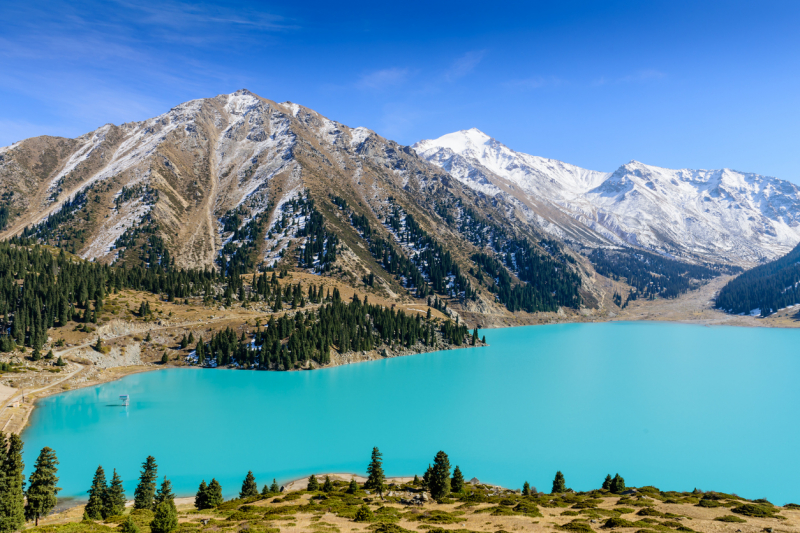
travel.earth 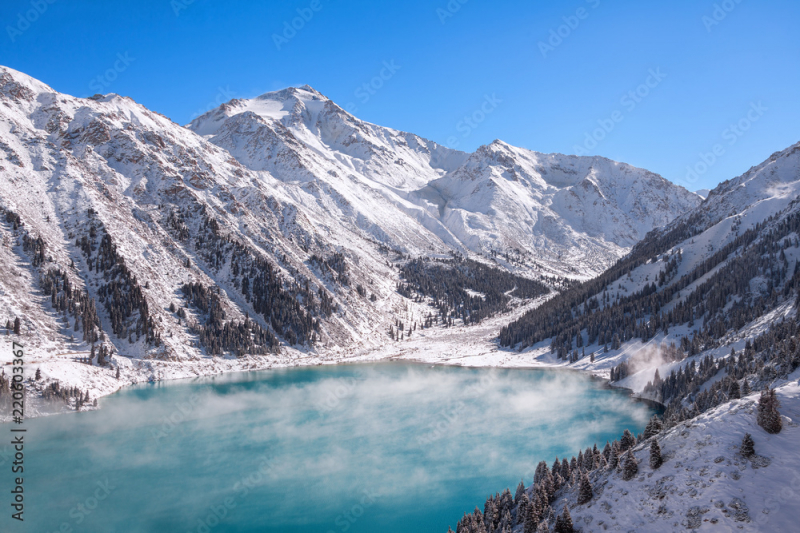
stock.adobe.com -
Trekking in the Tian-Shan mountains was a once-in-a-lifetime experience. You should go on the 'Pearl of the Tian-Shan' tour with Kazakh Adventure. It is one of the UNESCO World Heritage Sites, with various landscapes and an extraordinarily rich biodiversity. It is of global significance as the origin of a number of developed fruit crops and is home to a wide range of forest types and plant community relationships.
The two-day tour with an experienced guide was a great bargain because it included a guided day of trekking through beautiful scenery. A village high in the mountains, nestled between the gorgeous Kolsay and Kaindy lakes and the Charyn Canyon. The walk is not for the faint of heart, although horseback rides are available if necessary, and there are frequent rest stops to soak in the view and recover from the steep slopes. Without the knowledge of our guide's driving abilities, it's difficult to cross tricky rocky river beds, steep unmade roads, and never-ending potholes. After a day of travelling and being outside in the fresh air, a calming sauna in an inventive makeshift bathhouse created by the guest house owner was the highlight. This is a once-in-a-lifetime chance.
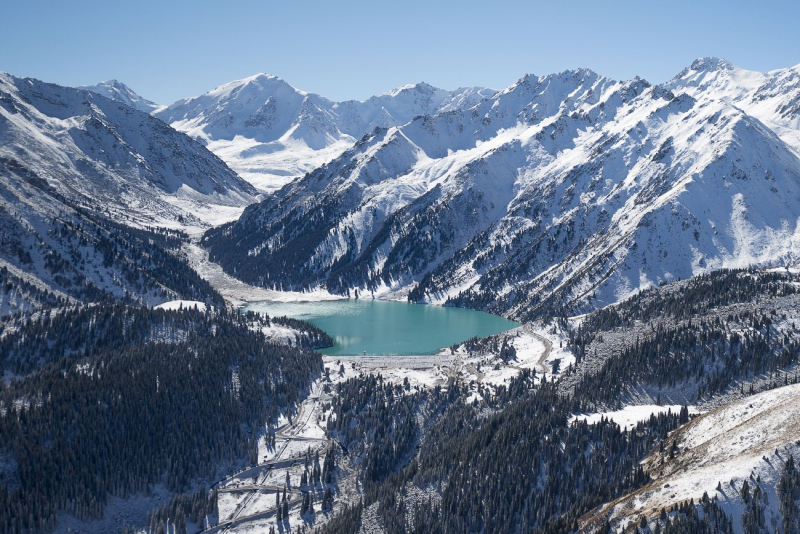
aboutkazakhstan.com 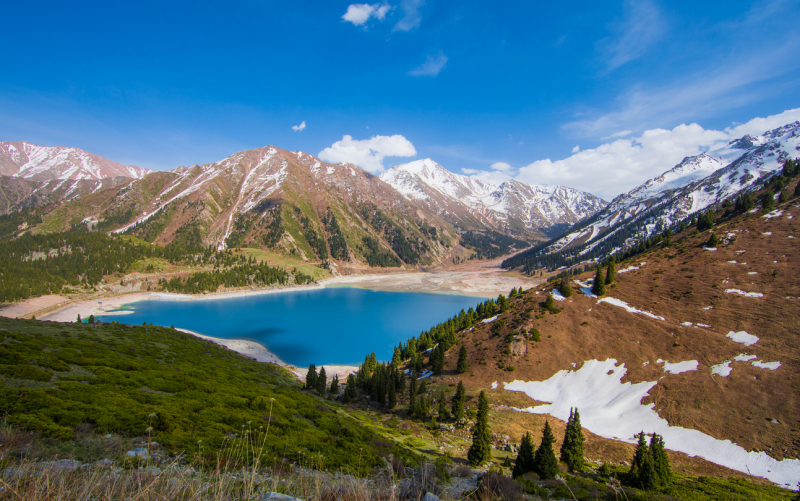
purevacations.com -
When it comes to one of Kazakhstan's most impressive religious structures, the Mausoleum of Khoja Ahmed Yasawi is a must-see. The Mausoleum of Khoja Ahmed Yaswi, a 12th-century Sufi teacher, is located in southern Kazakhstan. The building's construction was interrupted in 1405, following Timur's death, and it was never completed.
The mausoleum is one of the biggest and best-preserved Timurid structures.The mausoleum is made of burned brick and comprises thirty-five chambers that accommodate a variety of uses. It is regarded as an exceptional example of Timurid design that contributed to the development of Islamic religious architecture. It is a khanaqa-style multipurpose construction that serves as both a tomb and a mosque.
The main entrance and sections of the interior were left incomplete, presenting excellent evidence of the period's construction practices. The entire complex will take roughly two hours to explore. Feel free to wander the grounds, but keep in mind the religious significance. Locals can enter for free, while visitors from other countries must purchase a ticket. Dress appropriately, which includes covering your shoulders and not wearing shorts or skirts.
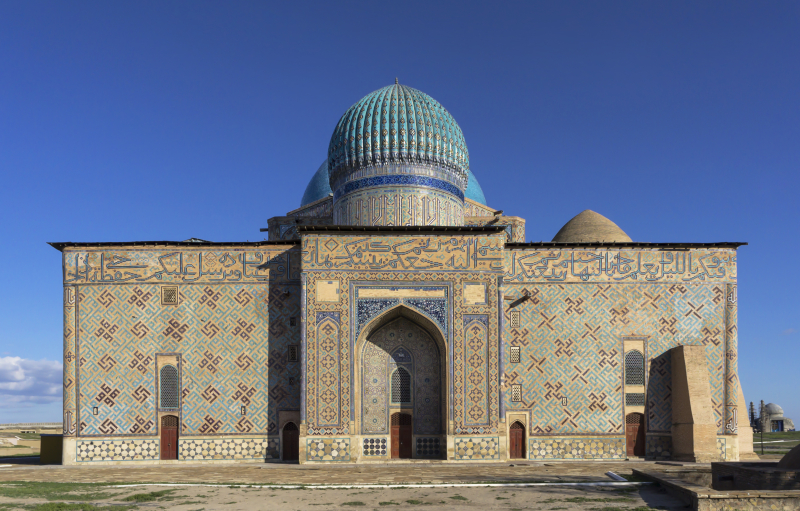
wikipedia.org 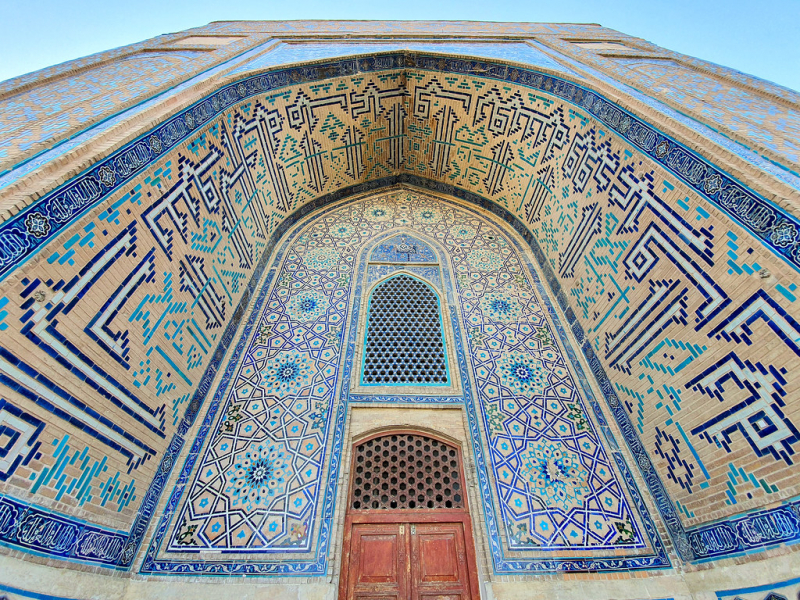
flickr.com -
Turkestan was established around 490 by nomadic immigrants. Turkestan would be transformed by the civilizations of the Eurasian Steppe, allowing it to thrive into the modern era. From defending a mighty city with city walls and defenses to defending customs, gastronomy, and spirituality. The Turkic Council designated Turkestan as the "Spiritual Capital of the Turkic World" in 2021.
This Silk Road treasure draws visitors from all over the world. As the Kazakh people greet you, legacies from conquerors and prophets are set before you. Everyone is invited to watch the Friday mosque or stroll with pilgrims and worshipers.
Continue through these ancient alleyways to learn about Central Asia's history. At the Mausoleum of Khoja Ahmed Yasawi, see the birth of Timurid architecture. Include the Mausoleum of Rabia-Sultan Begum and the Azret Sultan Museum-Reserve on your itinerary.The visitor and Kazakh food are central to hospitality traditions. Aromatic soups, bready cakes, and lamb and horse folded dough or tortillas are highly recommended. Participate in rug and carpet manufacturing, embroidery on felt or wool, and delicate pottery. The musical culture is instrumental, featuring traditional dombra and kobyz sounds. Turkestan's religious and cultural heart will fascinate and warmly welcome you.
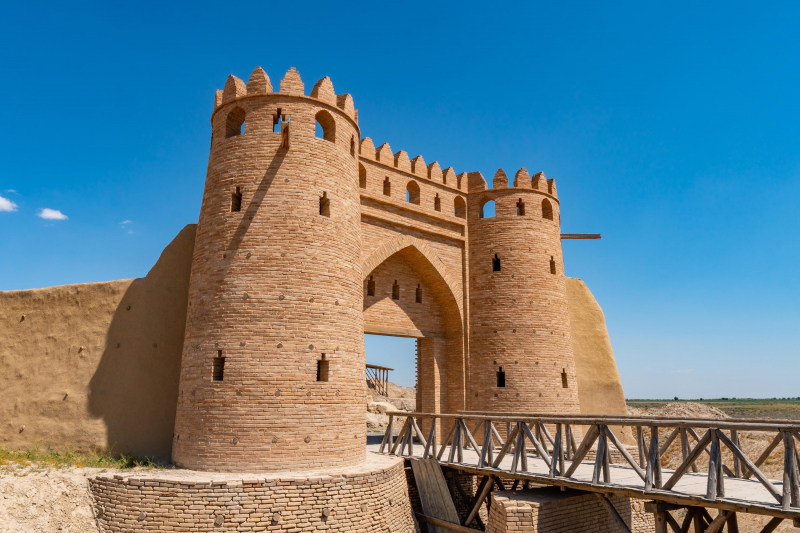
visitworldheritage.com 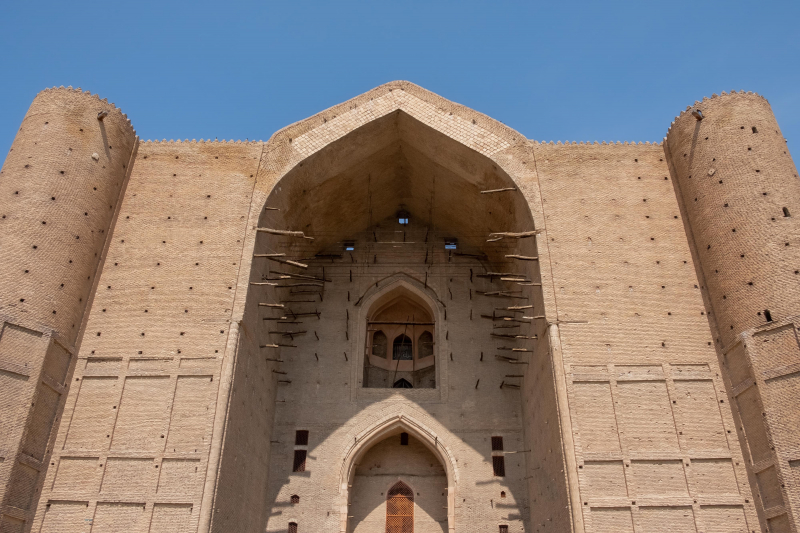
visitworldheritage.com -
The Kazakh national cuisine is rich in meat and milk dishes. This country is one of the world's greatest meat consumers, with each Kazakhstani eating 73 kilos of meat per year on average. Furthermore, the meat utilized is frequently horse meat, which is strange for most people but quite normal for Kazakhs. After all, these people lived a nomadic existence for a long time, which was reflected in their food tastes. Among Kazakh national cuisines, there are several fermented milk dishes. Indeed, due to the nomadic lifestyle, only this cooking method allowed milk to be preserved for as long as feasible.
Traditional Kazakhstan cuisine nowadays is a synthesis of ancient and contemporary traditions. Previously, there were no side dishes in Kazakh cuisine, and meat alone could make a whole dinner. Only until the Kazakhs grew sedentary and were influenced by neighboring countries did legumes, fruits, vegetables, fish, wheat goods, and sweets come in their diet.
Besbarmak is Kazakhstan's national dish, and it is eaten at practically every celebration. On a huge communal platter, this meal of boiling pork and thin squares of handmade noodles is frequently served with broth. Besbarmak is also known as "Kazakh-style beef" in Russian.
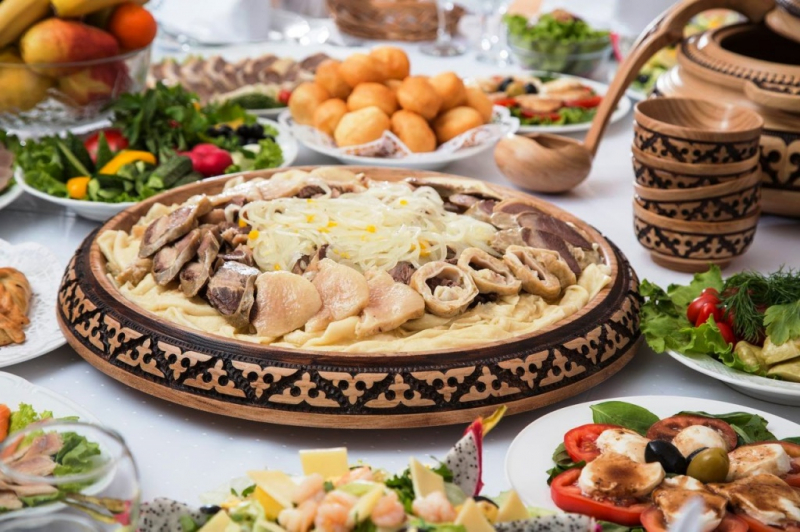
caspiannews.com 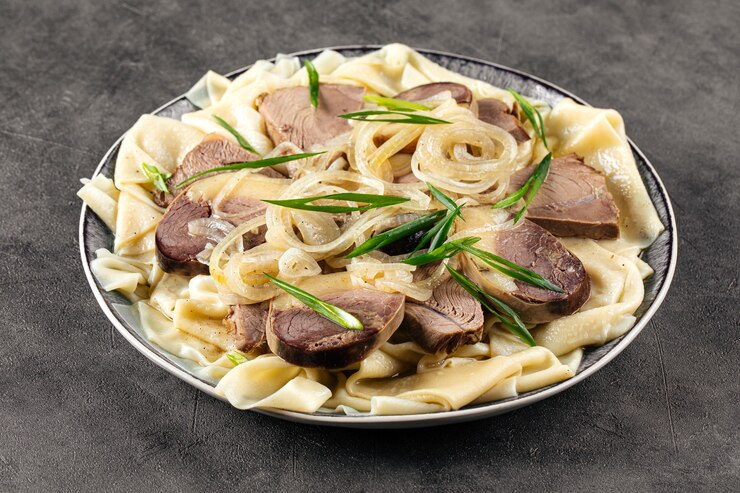
freepik.com -
Kazakhstan culture depicts the history of nomadic tribes that roamed the Kazakh steppe, constructing their own worldview, developing varied customs and traditions, and mingling with adjacent civilizations. In the nineteenth and twentieth centuries, many Kazakhs embraced a more sedentary lifestyle, resulting in the creation of new cultural traits for Kazakhs, such as massive, sparkling, contemporary towns. Kazakhstan culture now represents the peoples of broad areas of Central Asia, expressing this nomadic spirit in diverse arts and customs.
The Kazakh yurt is a temporary home that nomads can quickly and simply erect and disassemble in order to load onto horses or camels as they travel to fresh pastures. The yurt is a sign of comfort, connection with the soil and the universe, and a memory of the nomadic past for Kazakhs.
Kazakh clothing is a distinct component of Kazakhstan culture. Although seeing individuals dressed in traditional Kazakh attire is becoming increasingly rare, its representatives from all classes donned the same attire. Class distinctions were observed solely in the degree of décor and embellishment. Men's traditional costume consists of a capana (belted bathrobe) and a headpiece, which might be a skullcap, cap, or fur hat (depending on weather or the type of event). Special clothes and a bridal headgear known as a "saukele" are worn by women.
shop12601.cmyt.org 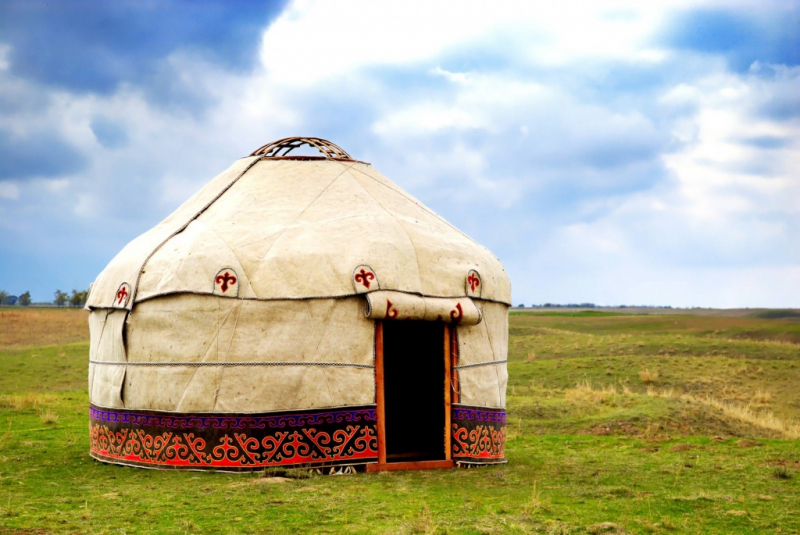
weproject.media -
Nauryz is a particularly important festival for Kazakhs since it represents the start of the new year. It is observed for many days beginning on March 21st, the day of the spring equinox. Nauryz, which means "new day," has been honored throughout the Great Steppes since ancient times. Nauryz represents kindness and riches, happiness and love, and a wonderful day of friendship, since this festival is celebrated by many cultures. When you have a chance to visit Kazakhstan, make it consider to choose the Kazakh holidays as your arrival to experience one of the most interesting thing in this country.
During Nauryz ceremonies, previous transgressions are forgiven and forgotten, and everyone expresses a wish to leave all badness behind and welcome in the New Year with renewed vigor. Both big cities and villages become festival hubs, with felt yurts as traditional nomad residences built in city centers and opulent dastarkhan (tables) set out in each. Yurts fill city squares, and numerous concerts take place there. It is a unique opportunity for you to learn about nomad culture and lifestyle, as well as see individuals dressed in exquisite national attire, listen to Kazakh songs and perform musical instruments, and so on. Traditional gifts and souvenirs are sold during holiday exhibits and fairs. Young people usually congregate around Altybakan, a giant hanging swing with colorful decorations, where songs are sung and traditional games are played.
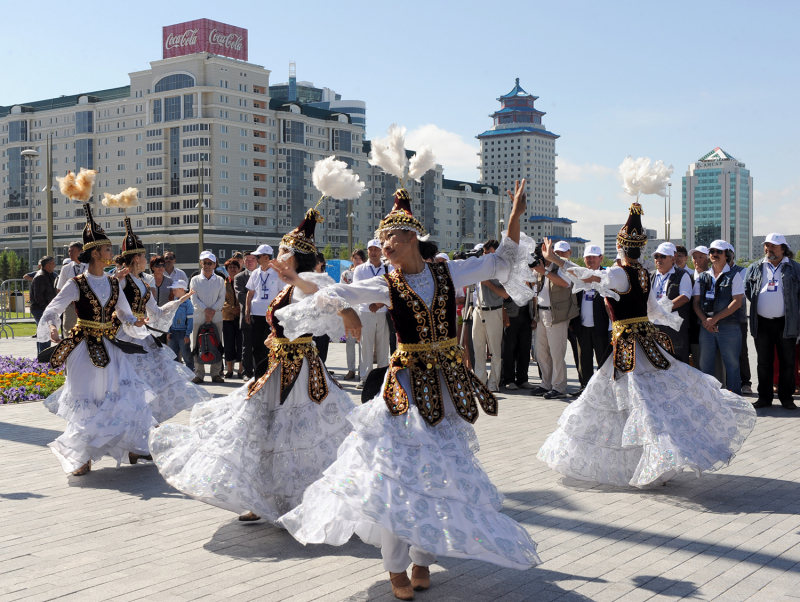
astanatimes.com 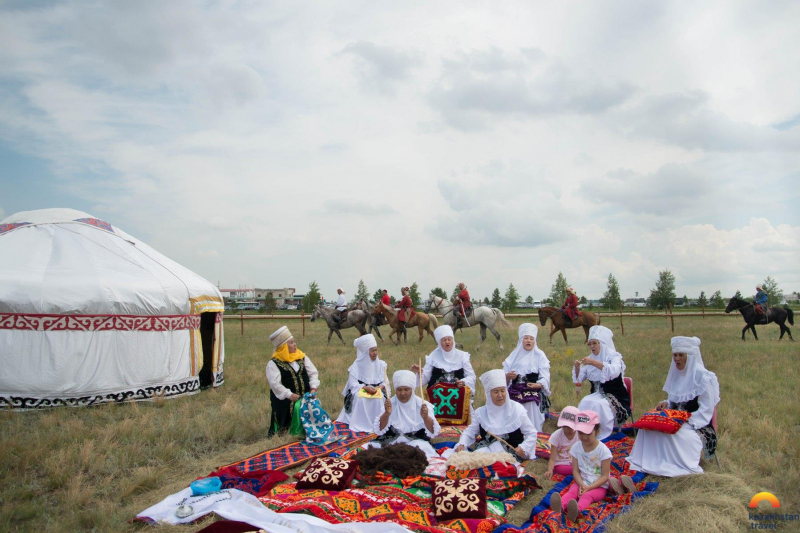
kazakhstan.travel -
Kazakhstan has a population of somewhat more than 18 million people. It is one of the world's most cosmopolitan countries, with just 64% of the population being native Kazakhs. It is home to 126 ethnic groups and accepts cultures and values from all around the world. Although Russians constitute by far the majority of the minority population, Kazakhstan's biggest towns, notably Almaty, have sizable expat populations comprised of nations from all over the world, including Germans, Ukrainians, and Koreans.
Although the majority of the population is Muslim, Kazakhstan is a secular country. When it comes to religion, it does not adhere to any specific practices. One possible explanation is the connection formed between Central Asian nations' native nomadic traditions and Islamic faith. Khoja Ahmed Yasawi was responsible for this. We observed a Mausoleum erected in honor of the guy himself, who was regarded a holy man and a saint. This bridge, and the succeeding interpretation of Islamic faith, is practiced by all nomadic Central Asian nations. It's really nice to watch, and it's surely contributed to the creation of a calm and friendly society. This attitude toward visitors developed in ancient times. Accidental travelers, as well as visitors, were always welcomed and served to the most delectable cuisine. Because the Kazakhs' forefathers were nomads, staying in an unknown dwelling was typical. "Konaqasy" is the name given to this ritual.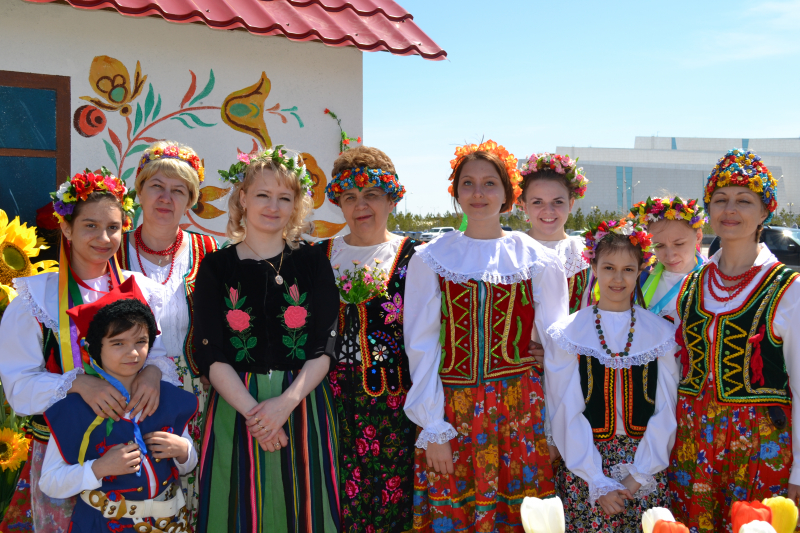
astanatimes.com 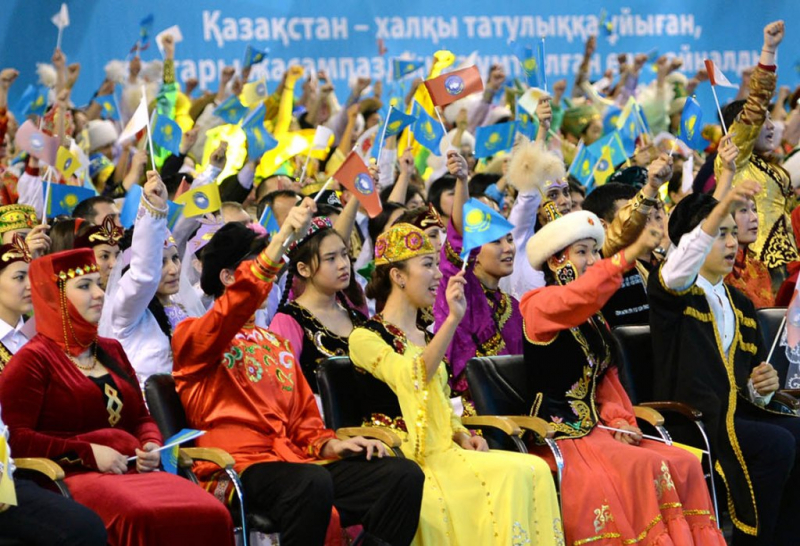
astanatimes.com













